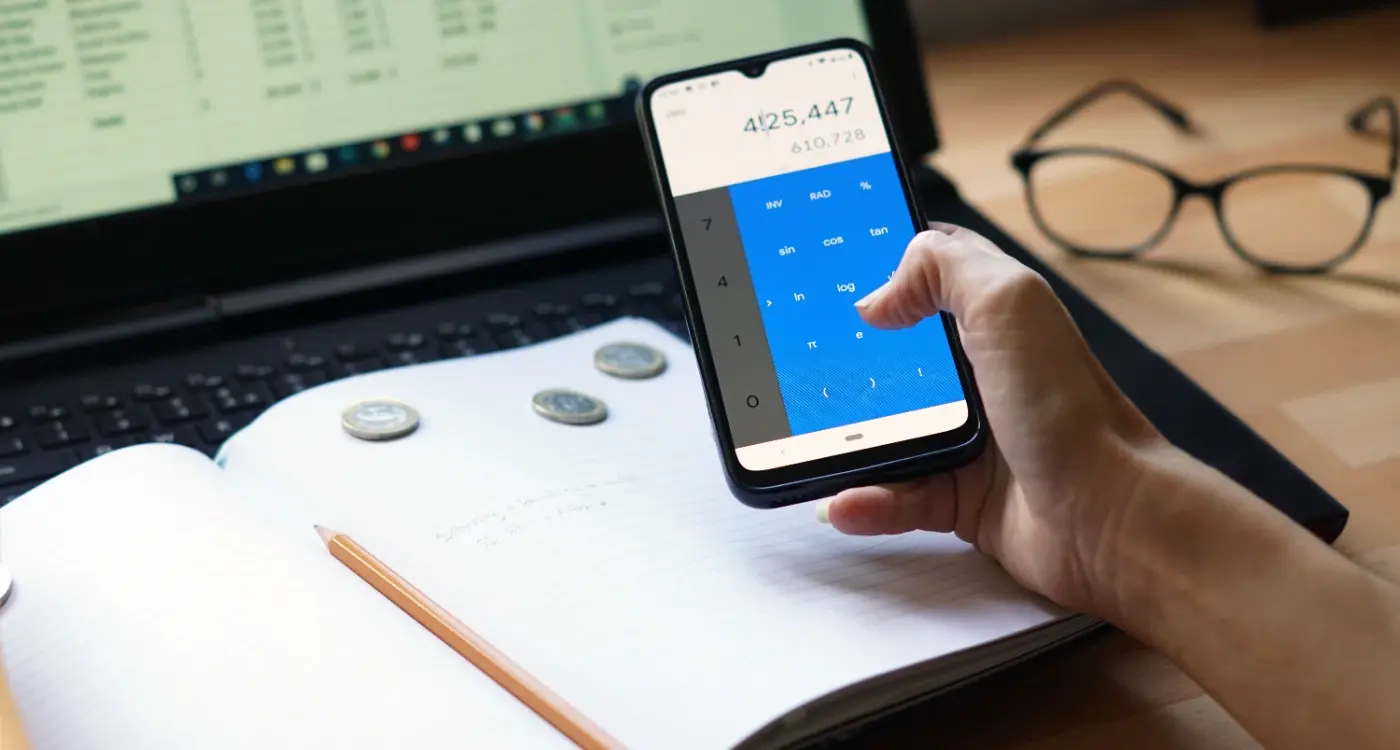Why Do Small Design Changes Cost So Much Later?
Why does a simple button colour change suddenly cost £3,000 when you're three months into development? I get asked this question more than any other, and honestly, I understand the frustration. From the outside, it looks like we're just changing a few pixels on screen—how hard can it be?
Here's the thing most people don't realise: your app isn't just a collection of pretty screens sitting in a folder somewhere. By the time you're asking for that "quick change," your app has become a complex web of interconnected systems, each one carefully tested and balanced against the others. That innocent button you want to make blue instead of green? It might be connected to 15 different functions, referenced in 8 separate files, and tested across 20 different user scenarios.
I've been building apps for years now, and I've seen this pattern repeat itself countless times. Clients approve designs, development begins, and then—usually right when we're getting close to launch—someone has a brilliant idea for a small tweak. What they don't see is how that small change cascades through every layer of the application.
The cost of change increases exponentially as development progresses, not because developers are trying to be difficult, but because the foundations have already been laid and tested
It's not just about the time it takes to make the change itself. It's about retesting everything that change might affect, updating documentation, checking it works on different devices, and making sure it doesn't break something completely unrelated. What looks like a five-minute job from the outside often requires days of careful work to implement properly. Let me show you exactly why this happens and how you can avoid these costly surprises.
The Foundation Myth
There's this common belief that app development works like building with Lego blocks—you just snap pieces together and swap them out whenever you fancy a change. I mean, it looks that simple from the outside, doesn't it? You've got a button here, some text there, maybe a nice photo in the background. How hard can it be to move things around?
But here's the thing: mobile apps aren't built like that at all. They're more like... well, actually forget analogies. Let me just tell you how it really works. Every single element you see on your screen is connected to dozens of other components you can't see. That innocent-looking login button? It's tied to your database, your security protocols, your user interface framework, and probably your analytics tracking too.
When a client asks me to "just move that button to the right a bit," what they don't realise is that button's position affects the entire layout system. Change its location and suddenly the text below it shifts, the keyboard interaction breaks on certain devices, and the whole screen needs to be retested on every phone size we support.
What's Really Happening Under the Hood
Here are the hidden connections that make "simple" changes complex:
- Layout constraints that keep everything aligned across different screen sizes
- Navigation flows that determine how users move through your app
- Data validation rules that check if user input makes sense
- API connections that talk to your servers and databases
- Accessibility features that help users with disabilities
- Performance optimisations that keep your app running smoothly
The foundation myth is believing that because something looks simple on the surface, it must be simple underneath. But mobile apps are complex systems where changing one thing often means updating five others to keep everything working properly.
When Development Becomes Architecture
Here's the thing most people don't realise—once your app starts taking shape, every single element becomes connected to everything else. I mean, it's not like building a house where you can change the colour of a wall without affecting the plumbing. In mobile apps, that innocent button you want to move? It might be tied to three different databases, two API calls, and a notification system.
When we're deep into development, your app has already established its own internal logic. The way screens talk to each other, how data flows between different sections, where user information gets stored—it's all interconnected. So when you say "can we just move this form to the top of the page?" what you're actually asking is for us to rewire a bunch of systems that were built to work in a specific way.
The architecture decisions we made early on? They're now load-bearing walls. Touch one thing and you might need to modify five other components to keep everything working properly. That's why a simple design tweak can balloon into days of work—we're not just moving pixels around, we're rebuilding the underlying structure that supports those pixels.
What Changes Impact Architecture
- Moving user input forms to different screens
- Adding new data fields that need to be stored
- Changing navigation flow between sections
- Modifying how user permissions work
- Altering payment or login processes
- Adding real-time features to static screens
The later in development these changes happen, the more expensive they become. It's not that we're trying to discourage improvements—it's just that the foundation is already set, and changing it requires careful reconstruction rather than simple adjustments.
Before requesting design changes mid-development, ask yourself: does this change how users interact with data or move through the app? If yes, expect architectural work—and budget accordingly.
The Ripple Effect
Here's where things get properly messy—and expensive. When you change one part of an app, it doesn't just affect that one screen or feature. It creates ripples that spread through your entire application like cracks in a windscreen.
I've seen what happens when a client says "can we just move this button to the left?" What seems like a five-minute job turns into days of work because that button connects to three different systems, affects the user flow on four screens, and breaks the notification system that nobody remembered existed.
Let's say you want to change how user profiles work. Sounds simple enough? Well, your profiles connect to the login system, the settings page, the social features, push notifications, analytics tracking, and probably the payment system too. Change one thing and you've got to check everything else still works properly.
What Gets Affected by Small Changes
- Database structure and how information is stored
- User interface elements on multiple screens
- Navigation flows and how users move through the app
- Third-party integrations and external services
- Analytics tracking and reporting systems
- Push notification triggers and messaging
- User permissions and security protocols
The worst part? You don't always know what's connected to what until you start pulling things apart. Modern apps are like those Christmas lights where one broken bulb kills the whole string—except you've got hundreds of bulbs and they're all different colours.
This is why experienced developers ask so many questions about seemingly simple changes. We're not trying to be difficult; we're trying to map out all the ripples before they turn into tsunamis. Because fixing things after they break in production? That's when the real costs start adding up.
Testing Everything Again
Here's where things get really expensive—and honestly, it's something most people don't see coming. When you make a design change late in development, you're not just changing one screen or button. You're potentially breaking dozens of features that were already working perfectly.
I've seen this happen countless times. A client asks for a "simple" change—maybe they want the navigation moved from the bottom to the top of the screen. Sounds straightforward, right? But now every single interaction in the app needs to be tested again. Every form, every animation, every user flow. Because moving that navigation might affect how users scroll, how keyboards appear, how modal windows display.
The testing process isn't just about checking if things look right either. We need to verify that nothing broke on different devices—iPhones, Android phones, tablets. Different screen sizes behave differently, and what works on one device might create problems on another. Then there's different operating system versions to consider.
Every design change creates a domino effect of testing requirements that most people simply don't anticipate
Your quality assurance team basically has to start from scratch. They can't just test the thing that changed; they need to make sure that change didn't break something completely unrelated three screens away. And trust me, it often does. I've seen a colour change break a payment flow because the new colour didn't have enough contrast for accessibility requirements. Small changes, big consequences.
This testing phase can easily add weeks to your project timeline. And weeks mean money—both in development costs and delayed launch dates. It's why getting your design locked down early saves you so much grief later.
App Store Politics
Here's something that catches most people off guard—app store submission isn't just about technical compliance; its about navigating an approval process that can be surprisingly subjective. I've had apps rejected for the most bizarre reasons, and trust me when I say that making changes after submission can turn into a real headache.
When you submit an app for the first time, you're basically presenting a complete package to Apple or Google. The screenshots, the description, the app flow—everything needs to tell a cohesive story. But here's the thing: if you decide to change something fundamental about your app's design or functionality after its been approved, you might trigger a more thorough review process.
What Triggers Extended Review
Small design changes can actually flag your app for additional scrutiny, especially if they affect core functionality or user experience. I've seen clients get their updates delayed for weeks because they changed their onboarding flow or modified how users interact with key features.
- Changes to in-app purchase flows or subscription models
- Modifications to user registration or login processes
- Updates to core navigation or user interface elements
- New features that weren't in the original submission
- Changes to app permissions or data collection
The worst part? You can't predict which changes will cause problems. I've had tiny UI tweaks get rejected while major feature additions sailed through. It's genuinely unpredictable, and that uncertainty means you need to budget extra time and money for potential resubmissions.
This is why getting your design right from the start matters so much. Every change you make post-launch carries the risk of delayed releases, additional development costs, and frustrated users waiting for updates. The app stores have their own timeline, not yours.
User Confusion Costs
Here's what really keeps me up at night when clients want "just a quick change" to their app design—its not the technical work, its what happens to the users. Every time you change something in your app interface, you're basically asking your existing users to relearn parts of your product. And trust me, they don't appreciate it as much as you might think.
When we made changes to a financial app's navigation structure late in development, the client thought it would improve user experience. The change itself cost them about £8,000 in development time—not too bad, right? But here's the thing; their support tickets increased by 340% in the first month after launch. Users couldn't find features they'd grown accustomed to during beta testing. The support costs alone hit £25,000 before things stabilised.
Your brain creates mental maps of how apps work. When you suddenly move the "Send Money" button from the bottom right to the top left, users don't just adapt overnight. They get frustrated, they leave bad reviews, and some just delete your app entirely. I've seen conversion rates drop by 15-20% simply because a late-stage design change confused users about where to find key functions.
Track user behaviour analytics before and after any design changes. Set up heatmaps and user session recordings to see exactly where people get stuck—this data will save you from making expensive assumptions about what users want.
The Real Cost of User Retraining
The numbers don't lie when it comes to user confusion. Based on projects I've worked on, here's what typically happens:
- Support ticket volume increases 200-400% in the first 30 days
- App store ratings drop by an average of 0.3-0.8 stars
- User retention decreases by 10-25% as people get frustrated
- Additional user onboarding materials need creating and implementing
- Customer success teams require extra training on new interface elements
The biggest mistake I see is underestimating how attached users become to familiar interfaces. Even small changes—like switching the colour of a primary button or moving a search bar—can create ripple effects that cost far more than the original development work. Factor in user retraining costs from day one, not as an afterthought when your support team is drowning in confused user emails.
The Technical Debt Problem
Technical debt is basically when we take shortcuts during development to get something working quickly, knowing we'll need to fix it properly later. It's like using duct tape to fix a leaky pipe—it works for now, but you know its going to cause bigger problems down the line.
Every app accumulates technical debt over time. When you're rushing to meet a launch deadline, developers make compromises. They might hardcode values instead of making them configurable, or they'll copy and paste code instead of creating reusable components. At the time, these decisions seem harmless; the app works, users are happy.
But here's where it gets expensive—when you want to make that "simple" design change later, all that debt comes due at once. What should be a quick colour change turns into a major refactor because the colour was hardcoded in seventeen different places. Moving a button becomes a nightmare because the layout was built with fixed positioning instead of flexible constraints.
The Hidden Costs of Accumulated Debt
I've seen clients shocked when a small change requires weeks of work. The problem isn't the change itself—it's everything that needs to be untangled first. Developers have to clean up years of shortcuts before they can make your modification.
- Code becomes harder to understand and modify
- New features take longer to implement
- Bug fixes create new bugs elsewhere
- Performance starts to degrade
- Security vulnerabilities multiply
The only way to manage technical debt is to address it regularly, not just when you need a change. Good development teams build in time for refactoring and cleanup. It costs more upfront, but it saves you from those shocking quotes later when you want to add a simple feature.
After eight years of watching clients react to design change estimates, I can tell you the conversation is always the same. "But it's just moving a button!" they say. And honestly, I get it—from the outside, it really does look simple.
But here's what I've learned: small changes aren't expensive because developers are trying to rip you off. They're expensive because your app is like a house of cards, and moving one card means checking that all the others won't fall down. That button you want to move? It connects to seventeen different functions, needs testing on twelve device types, and might break the payment system if we're not careful.
The real kicker is that these costs compound over time. Early in development, moving that button takes an hour. Six months later, it takes a day. After launch? Could be a week once you factor in testing, deployment, and making sure you haven't accidentally broken something for existing users.
I've seen projects go 300% over budget because of "small tweaks" that seemed reasonable at the time. The clients who succeed are the ones who understand this from day one—they invest time upfront getting the design right, they ask questions early when changes are cheap, and they resist the urge to tinker once development gets serious.
Your design budget isn't just about making things look pretty. It's about making decisions when they're still reversible. Because once you're deep into development, every change becomes a technical project in its own right. Plan accordingly, and your wallet will thank you later.
Share this
Subscribe To Our Learning Centre
You May Also Like
These Related Guides

How Much Does It Cost to Keep Your App Running?

How Do You Calculate True ROI for Mobile App Development?



